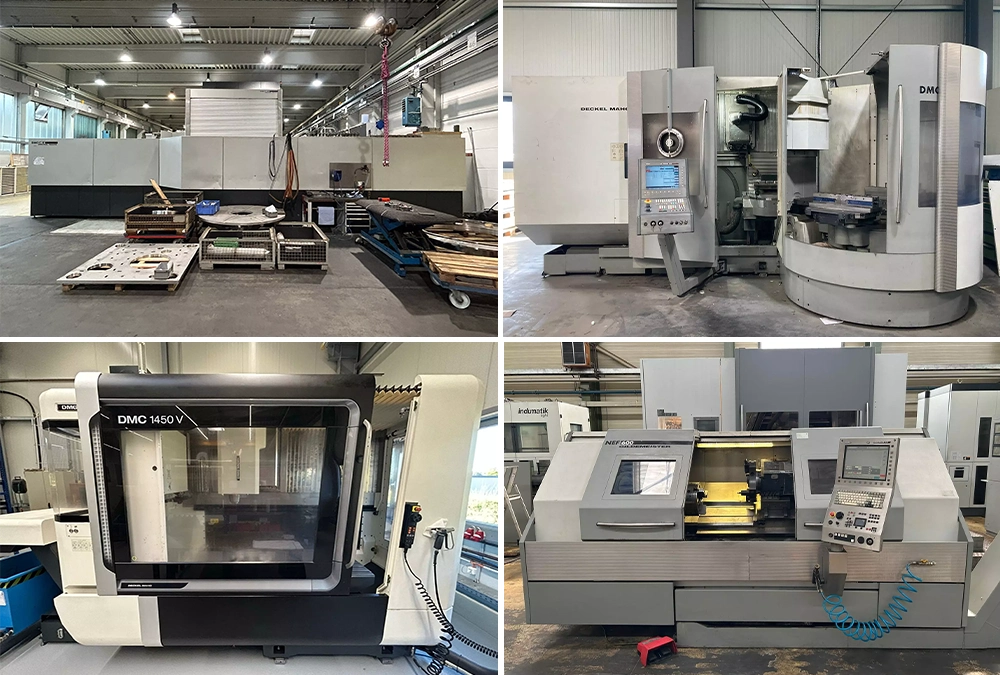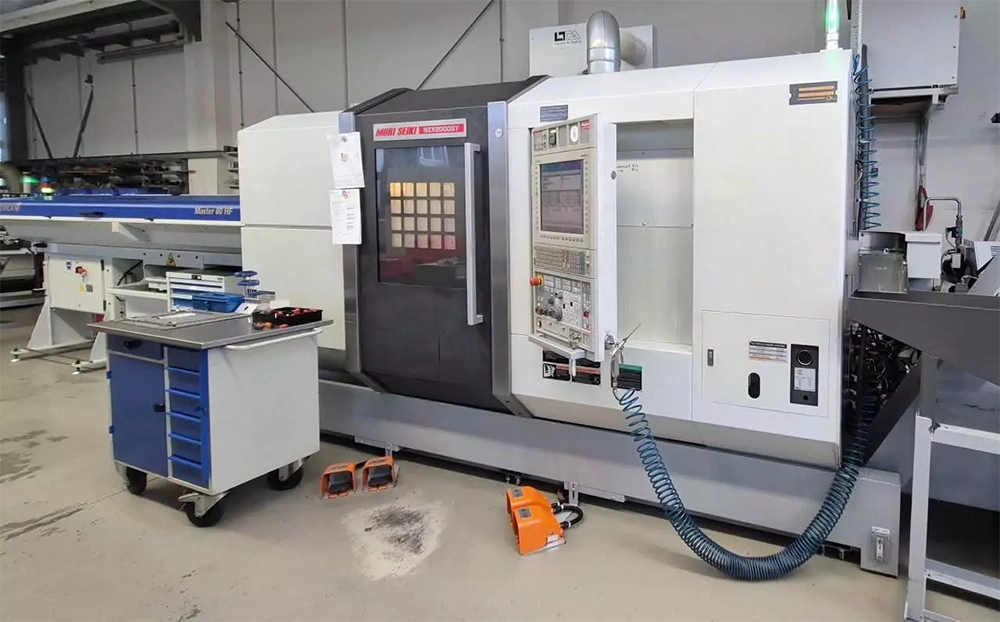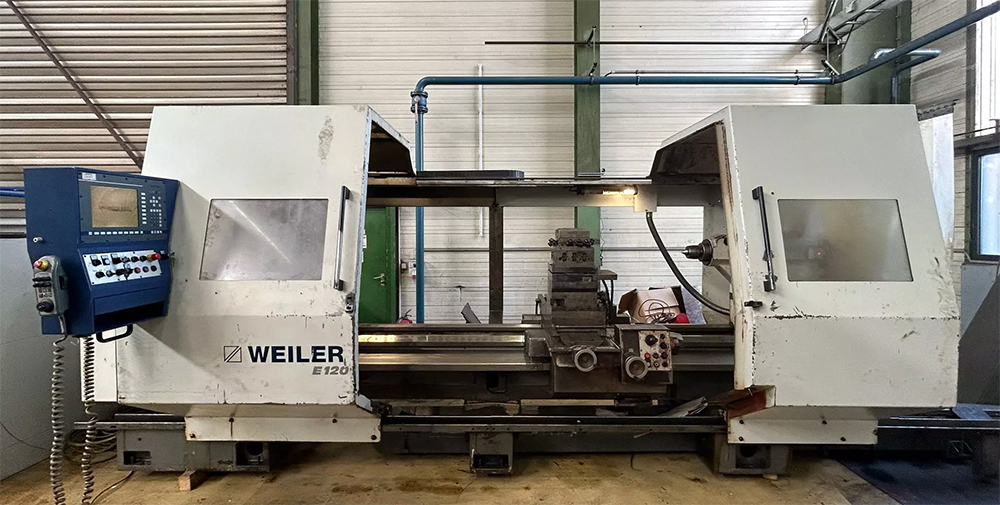CNC machine purchasing advice
Purchasing advice: Which machine type is right for your requirements?
Regardless of whether you run a medium-sized company or a large industrial operation, choosing the right CNC machine will have a significant impact on your production capabilities and therefore the overall success of your business. With our comprehensive purchasing advice for CNC machines, we help you to understand the complex requirements when choosing and purchasing these sophisticated machines. In particular, we look at the important factors of size, performance and specific applications and highlight which features are important for different industry needs. Our goal is to provide you with the knowledge you need to make an informed decision that will optimize your operational efficiency and increase your productivity.


CNC machine types for specific applications
In addition to CNC lathes and CNC turning machines, which are used in metalworking in particular, there are also special machines for processing wood and lightweight composite materials. These include CNC routers, for example, which are often found in furniture production and the automotive industry. The choice of the right type of machine therefore also depends on the materials to be processed.
Factors to consider when selecting a CNC machine
Performance and performance capacities also play a decisive role when deciding on the right CNC machine. The most important parameters here are the cutting, turning and feed speeds as well as power and torque. The cutting speed determines the distance that the material-removing tool (milling cutter, rotary cutter, etc.) covers per unit of time on the workpiece and therefore has a direct influence on the tool life.
The rotational speed, specified in revolutions per minute (rpm or RPM), indicates how quickly the rotary head sets the material block in rotary motion, while the feed rate (also: work feed) indicates how many millimetres per minute the workpiece is moved by the tool (or vice versa, depending on the machine type) - in the case of a milling machine, the displacement of the milling cutter during one revolution of the spindle head and, in the case of a lathe, the movement of the cutter along the workpiece. Furthermore, the cutting depth determines how far the tool penetrates into the workpiece during removal, i.e. the difference between the diameters of the machined and unmachined surface.

It should be noted that high-performance machines can process harder materials and handle more demanding tasks overall. For efficient production, the choice of performance parameters must therefore be selected to suit the material and the parts to be produced.
CNC machine designs for different requirements
The number of axes is a fundamental distinguishing feature of CNC milling machines. With 3-axis milling machines, the milling tools are moved along the three axes X, Y and Z, thus enabling machining along these axes. With their additional axes, 5-axis milling machines also enable rotational movements around the X, Y and Z axes, making more complex machining operations possible.
Performance features of CNC machine components for different areas of application
Another important aspect when choosing a CNC machine is sufficient dimensioning in relation to the workpieces to be machined. In particular, the size of the work area, table sizes, weight capacities and travel distances play a decisive role here.
Budget considerations for CNC machines
If an outright purchase is beyond your current budget, there are financing options and leasing arrangements that allow access to more advanced and higher priced models. These options allow for better cash flow management and can be a smart choice for businesses seeking high volume production without significant initial outlay.
Where to buy CNC machines and after-sales support
Make sure the supplier offers comprehensive customer service and technical support. Reliable after-sales support can significantly reduce machine downtime and increase productivity as issues can be resolved quickly and efficiently.
Conclusion
FAQ: Buying CNC machines
How long is the average service life of a CNC machine?
The average lifespan of a CNC machine can vary greatly depending on the frequency of use, materials used and maintenance practices. In general, a well-maintained CNC machine can last between 10 and 20 years. Regular maintenance and proper use are critical to maximize the life of these machines.
How often should CNC machines be serviced?
CNC machines should undergo a comprehensive inspection at least once a year. However, specific maintenance intervals may vary depending on the manufacturer's recommendations and the intensity of use. It is crucial to follow a preventive maintenance schedule that includes regular inspections of mechanical parts, lubrication and software updates to ensure optimal performance and avoid breakdowns.
Can CNC machines be upgraded with new technology as it becomes available?
Yes, CNC machines can often be upgraded with new technology. Many CNC systems allow for upgrades in software, hardware components such as spindle drives and motors, and retrofits with advanced sensors and controls. These upgrades can improve machining accuracy, speed and versatility and adapt older machines to new manufacturing requirements.
What are the training requirements for operating CNC machines?
The operation of CNC machines generally requires specific training in the theoretical and practical aspects of CNC machining. This includes knowledge of CNC programming, machine operation and safety procedures. Many technical schools and community colleges offer courses in CNC machine operation, and manufacturers or specialized training providers can also offer on-site training specifically tailored to particular machines and software.


